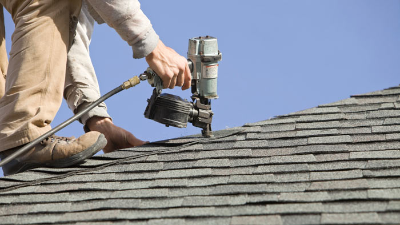1. Signs Your Roof Needs Professional Attention
Ignoring roof issues can lead to costly damage down the line. Watch for these red flags:
l Visible Damage: Missing, cracked, or curling shingles; sagging or uneven areas; rusted metal panels; or granules in gutters (a sign of asphalt shingle wear).
l Interior Leaks: Water stains on ceilings, moldy odors, or dripping during rain—even small leaks signal underlying problems.
l Age-Related Wear: Asphalt shingle roofs last 20-30 years; metal roofs 40-70 years; and tile/slate up to 100 years. If your roof is approaching or exceeding its lifespan, proactive inspection is key.
l Energy Bills Spike: A damaged roof allows heat/cold to escape, forcing your HVAC to work overtime.
2. Repair vs. Replacement: When to Fix and When to Start Fresh
Roof Repair: Ideal for Minor Issues
l Small Leaks: A single damaged shingle or a loose flashing (metal sealant around chimneys/skylights) can often be fixed without replacing the entire roof.
l Localized Damage: Storm damage affecting only part of the roof (e.g., a fallen branch puncturing a section) may qualify for targeted repairs.
l Cosmetic Updates: Replacing a few cracked tiles or refreshing sealant on a otherwise sound roof can extend its life.
Roof Replacement: Necessary for Widespread Damage
l Extensive Shingle Degradation: If over 30% of shingles are damaged, replacement is more cost-effective than piecemeal repairs.
l Structural Issues: Sagging rafters, rotted decking, or persistent mold indicate underlying structural problems that repair can’t resolve.
l Upgrading for Efficiency or Style: Want to switch to energy-efficient metal roofing or enhance curb appeal with premium materials? Replacement is the opportunity to invest in long-term value.
3. Common Roofing Materials: Pros, Cons, and Best Uses
Choosing the right material impacts durability, cost, and aesthetics:
a. Asphalt Shingles
l Pros: Most affordable (\(3-\)5 per sq. ft.), easy to install, wide color options, decent lifespan (20-30 years).
l Cons: Vulnerable to wind (over 60 mph) and heavy hail; requires regular inspection for granule loss.
l Best For: Budget-conscious homeowners in moderate climates.
b. Metal Roofing
l Pros: Extremely durable (50+ years), weather-resistant (fire, wind, snow), energy-efficient (reflects sunlight), eco-friendly (recyclable).
l Cons: Higher upfront cost (\(8-\)16 per sq. ft.), potential for noise during rain (mitigated with proper insulation).
l Best For: Regions with harsh weather or homeowners seeking low-maintenance, long-term solutions.
c. Clay/Concrete Tiles
l Pros: Stunning aesthetic, fireproof, lifespan up to 100 years, excellent for heat resistance.
l Cons: Heavy (requires structural reinforcement), expensive (\(10-\)25 per sq. ft.), brittle in freezing temperatures.
l Best For: Mediterranean or Spanish-style homes in warm climates.
d. Slate
l Pros: Luxurious appearance, natural fire/snow resistance, lifespan 75-200 years—one of the most durable options.
l Cons: Very heavy, costly (\(15-\)30 per sq. ft.), requires skilled installation.
l Best For: Historic homes or homeowners prioritizing timeless elegance and longevity.
4. DIY vs. Professional Services: Why Expertise Matters
While minor repairs like replacing a single shingle might seem doable, most roof work is best left to professionals:
l Safety: Roofs are slippery and dangerous—falls are a leading cause of home injury.
l Warranty Protection: Many materials require professional installation to maintain manufacturer warranties (e.g., 50-year shingle warranties are void if installed incorrectly).
l Hidden Issues: A contractor can identify underlying problems (e.g., rotted decking, moisture damage) that DIYers might miss, saving you from future headaches.
5. Preparing for a Roof Project: First Steps
Before hiring a service:
l Inspect Thoroughly: Schedule a free roof inspection with a licensed contractor to identify issues and get a written assessment.
l Set a Budget: Factor in materials, labor, and potential surprises (e.g., replacing rotten plywood under shingles).
l Research Local Climate: Choose materials suited to your region—e.g., metal for snowy areas, tile for heat, or impact-resistant shingles for hail-prone zones.




